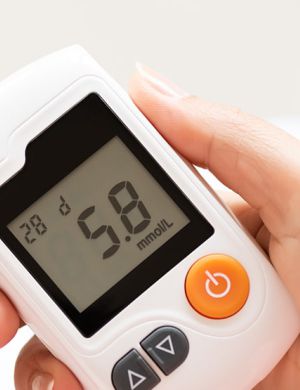
AI – Transformation of Regulatory Intelligence in Pharma
AI is transforming regulatory intelligence in pharma by providing faster and more accurate access to relevant information. Regulatory intelligence involves monitoring and analyzing regulatory changes and developments in the pharmaceutical industry to ensure compliance with regulations. AI is being used to analyze vast amounts of data and identify patterns that can be used to predict regulatory trends and changes. This enables companies to proactively adjust their strategies and comply with regulations in a timely manner. AI is also being used to automate tasks such as monitoring regulatory changes, tracking regulatory submissions and approvals, and managing regulatory documentation. This reduces the risk of errors and frees up time for regulatory professionals to focus on higher-value tasks. Furthermore, AI is being used to improve the accuracy and consistency of regulatory submissions.
By analyzing past submissions and regulatory decisions, AI can identify common mistakes and provide guidance on how to avoid them. This ensures that regulatory submissions are complete, accurate, and comply with regulations. Overall, AI is transforming regulatory intelligence in pharma by enabling companies to stay ahead of regulatory changes, reduce the risk of non-compliance, and improve the efficiency and effectiveness of regulatory operations.
Artificial intelligence (AI) is transforming regulatory intelligence in the pharmaceutical industry by providing powerful tools for processing, analyzing, and interpreting large volumes of regulatory data. Here are some ways in which AI is transforming regulatory intelligence in pharma:
Data Collection and Analysis:
AI systems can collect and analyze large volumes of regulatory data from multiple sources, including regulatory agencies, academic journals, and clinical trial data. This allows pharma companies to monitor regulatory changes in real-time, assess the impact of these changes on their products, and identify potential compliance risks.
Predictive Analytics:
AI-powered predictive analytics can help pharmaceutical companies anticipate future regulatory changes and take proactive steps to ensure compliance. By analyzing historical regulatory data, AI can identify patterns and trends that indicate the likelihood of future regulatory changes.
Natural Language Processing:
AI-powered natural language processing (NLP) systems can analyze unstructured regulatory data, such as clinical trial reports and regulatory submissions, to extract relevant information. This can save time and resources by automating the review process and reducing the risk of human error.
Risk Assessment
AI can help pharmaceutical companies identify potential compliance risks by analyzing regulatory data and identifying patterns that may indicate non-compliance. This can help companies take corrective action before regulatory agencies identify non-compliance.
Regulatory Reporting:
AI-powered systems can help pharmaceutical companies automate the preparation of regulatory reports, such as adverse event reports and clinical study reports. This can save time and resources and reduce the risk of errors.
One of the major ways AI is transforming regulatory intelligence is through Natural Language Processing (NLP). With NLP, AI can parse through huge volumes of regulatory documents, including guidelines, policies, and regulations, and extract the relevant information. This enables pharmaceutical companies to stay informed about changes in regulations and compliance requirements in real-time.
AI is also being used in drug discovery and development, which is a highly regulated process. AI-powered algorithms can analyze massive datasets, including genetic and molecular information, to identify new drug targets and optimize drug candidates. This can help speed up the drug development process and ensure that drugs are developed according to regulatory standards. Moreover, AI is being used in pharmacovigilance, which involves monitoring the safety and efficacy of drugs once they are on the market. AI-powered tools can analyze large volumes of data from various sources, including social media and electronic health records, to identify adverse drug reactions and potential safety issues. This can help regulatory bodies to make informed decisions about drug safety and ultimately improve patient outcomes. In the context of regulatory intelligence in pharma, NLP is used to analyze large volumes of regulatory documents, such as guidelines, policies, and regulations, to extract relevant information. This enables pharmaceutical companies to stay up-to-date with regulatory changes and compliance requirements in real-time. Here are some ways in which AI is using NLP to transform regulatory intelligence in pharma:
Document Analysis:
AI-powered NLP algorithms can analyze large volumes of regulatory documents, identify key concepts, and extract relevant information such as product names, regulatory requirements, and compliance standards.
Sentiment Analysis:
NLP algorithms can also be used to analyze the sentiment of regulatory documents. This helps pharmaceutical companies to understand the regulatory landscape and identify potential risks or opportunities.
Translation:
AI-powered NLP can also translate regulatory documents from different languages, making it easier for pharmaceutical companies to analyze regulations from different regions and countries.
Chatbots:
AI-powered chatbots can answer regulatory compliance questions in real-time, helping pharmaceutical companies to stay compliant with regulations.
AI is transforming regulatory intelligence in pharma by leveraging machine learning and predictive analytics to analyze large volumes of data, identify patterns, and make predictions about regulatory compliance. Here are some ways in which AI is using machine learning and predictive analytics to transform regulatory intelligence in pharma:
Predictive Compliance:
AI-powered predictive analytics can identify patterns in regulatory data, such as inspection reports and warning letters, and predict compliance risks. This helps pharmaceutical companies to identify and address compliance issues before they arise.
Quality Control:
Machine learning algorithms can analyze production data to identify patterns and predict quality issues. This enables pharmaceutical companies to identify and address quality issues before they occur, ensuring that products are manufactured to regulatory standards.
Adverse Event Detection:
AI-powered algorithms can analyze data from multiple sources, including social media and electronic health records, to identify adverse drug reactions and potential safety issues. This can help pharmaceutical companies to identify and address safety issues quickly, ensuring that drugs are safe for patients.
Risk Assessment:
Machine learning algorithms can analyze data from various sources, including clinical trials, to assess the risk of adverse events. This helps regulatory bodies to make informed decisions about drug safety and ultimately improve patient outcomes.
Don’t miss out! Click here to stay in touch.
Categories
- Biopharma (58)
- Consumer Health (21)
- Cosmetics (11)
- Diagnostics (5)
- Digital Health (8)
- Food (2)
- Medical Device (112)
- OTC (5)
- Regulatory Intelligence (13)
- Standards (41)
Recent Blogs
Get the latest updates from Vistaar

CONNECT WITH US

Let's talk about how Vistaar can help you




